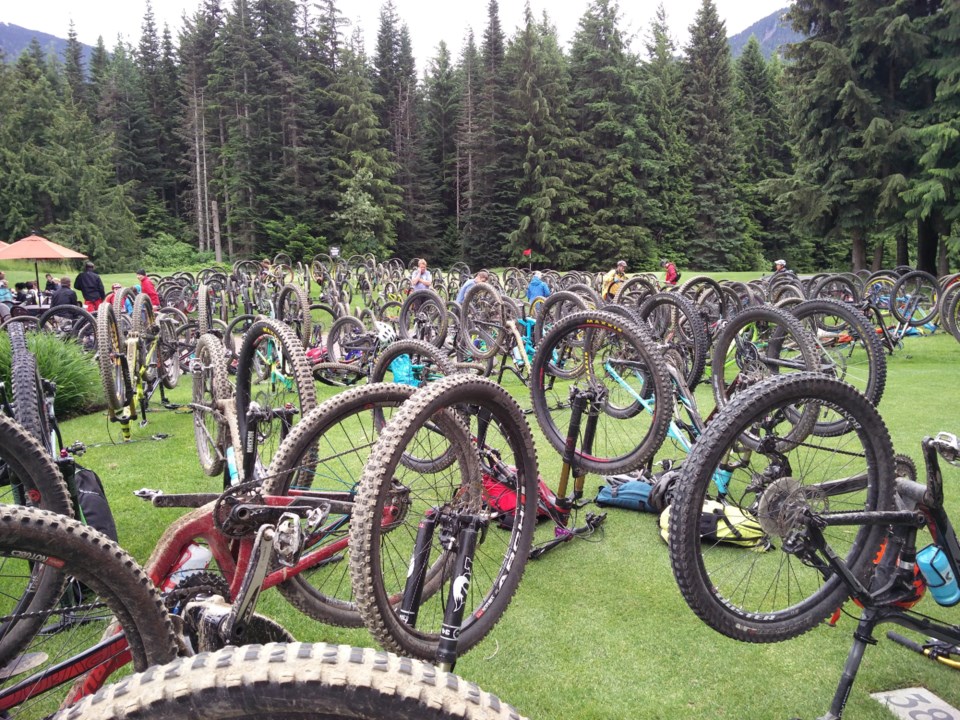It was June, 2021 when I wrote a feature story for Pique titled “Metal on Metal: Navigating the global dearth of bike parts.” Back then, we were all very much in the midst of the pandemic, travel was all but essential, and seemingly everyone in the world had money to burn on outdoor recreation, with a lot of that money going into bikes.
I interviewed sales reps who spoke of lead times of more than 365 days, and bike shop owners who had to curtail customers’ toilet paper-style hoarding of critical components like chains. Shimano’s global sales for the 2021 season were up by as much as 76 per cent over the previous year. The bike industry experienced some of its highest growth in the shortest possible time, with a caveat that the growth was limited by what could get manufactured, shipped and sold during the boom.
The great pandemic bike boom is officially over.
Just like return to work, return to the office, return to (mostly) normal travel and return to typical consumer spending, bike demand has returned to normal. There is greater demand than pre-pandemic, of course, and it’s great to have more people in the world on bikes. But all of those big orders that bike brands put in last year have now arrived with relatively few consumers looking for new product.
This is evidenced by core brands such as Trek, Specialized, Rocky Mountain, Santa Cruz, and Transition having sales on their entire lines of bikes this month. Warehouses are stacked to the rafters with bike boxes, and more shipping containers of new gear are arriving every day. Same goes for apparel, parts, and accessories. What was scarce is now abundant, putting mountain bikers like you in the position to choose what you want while paying less.
The glut of bikes and bike gear is also trickling into the used market, conversely making it probably the worst time to sell a bike. So if you’re looking to grab one of those new bikes on sale, you may get less than you wanted for your old rig. This is good news for mountain bikers entering the sport, who’ll get a bit more bang for their buck on their initial second-hand bike purchase.
Before I get into some of the new tech making strides in the bike industry, I’ll remind everyone that, while blowing your hard-earned cash on bikes is fun, don’t forget to support your local trail association with your membership dues. Mountain bikes are great, but they’re nothing without great trails to ride. Also, don’t underestimate the benefits of quality coaching. You can get a lot more out of a cheaper bike if you work on your skills.
Taipei Cycle took place last week in Taiwan, one of the bigger spring tradeshows for the bike industry. While there was no shortage of weird and wonderful bike products on display, a lot of the mountain-bike brands tend to launch their new products at the Sea Otter Classic, which takes place April 20 to 23 this year in California. Check out pinkbike.com for some great videos and reports on the latest bike-related gadgets showcased at these events.
Speaking of gadgets, last week SRAM launched its new electronic and wireless Eagle Transmission drivetrain. This came with a lot of tech fanfare in mountain-bike media channels, including a lot of photos of riders standing on very expensive derailleurs to demonstrate its strength and resilience to impacts. For reference, if you tried this on your regular derailleur hanger-mounted drivetrain, it probably wouldn’t shift very well again, at least until a bike shop straightens it out for you. The reason it’s so strong is because it uses a universal derailleur hanger system that bolts straight to the axle. Read: no more vulnerable (and bendable) derailleur hanger. Once set up in three easy steps, the transmission system also says goodbye to limiting screws, those little annoying fasteners that amateur home mechanics always seem to struggle with. The system also revamps the rear cassette to shift smoothly under any load, including that of pedal-assist e-bike motors. If you’ve ever heard (and felt) the disturbing, teeth-gnashing crunch of a gear shift gone wrong, you can appreciate the significance of this. There’s a lot more engineering tech to it, of course, which you can read in your gear review channels.
The elephant in the room with the Eagle Transmission is its price. At USD$1,599, it’s not a drivetrain many will be rocking this summer. I’m waiting for the inevitable trickle down of tech to more affordable components, as well as what Shimano will respond with. In the meantime, enjoy some relative affordability in the mountain-bike industry.
Full disclosure, Vince Shuley works for a mountain-bike company that was not mentioned in this column. For questions, comments or suggestions for The Outsider email [email protected] or Instagram @whis_vince.




